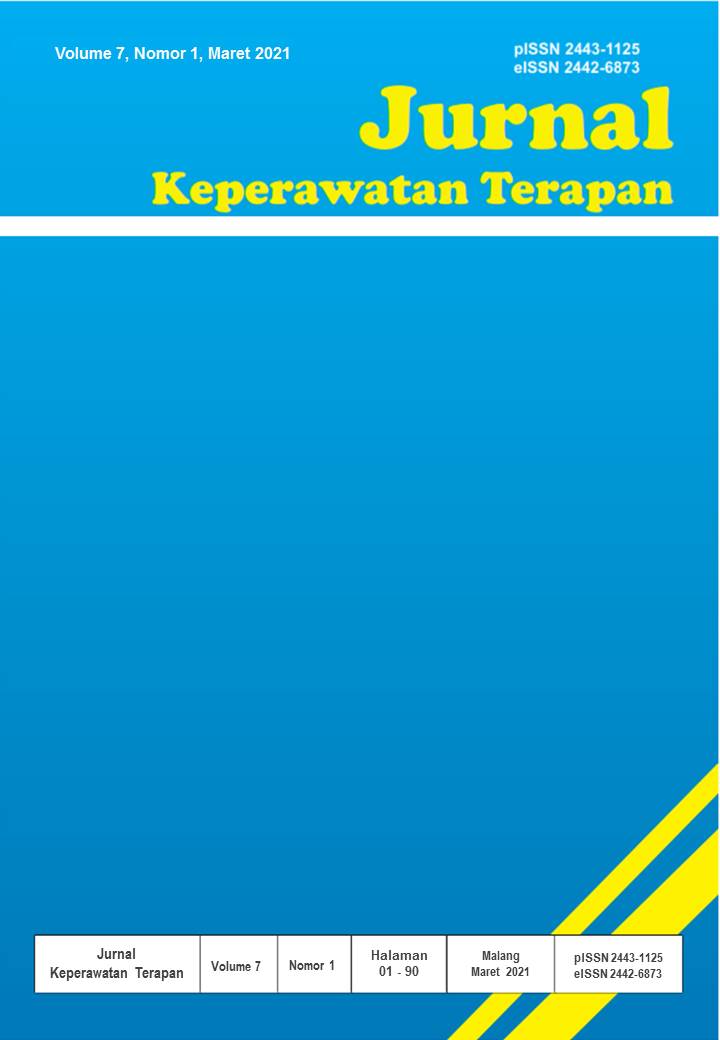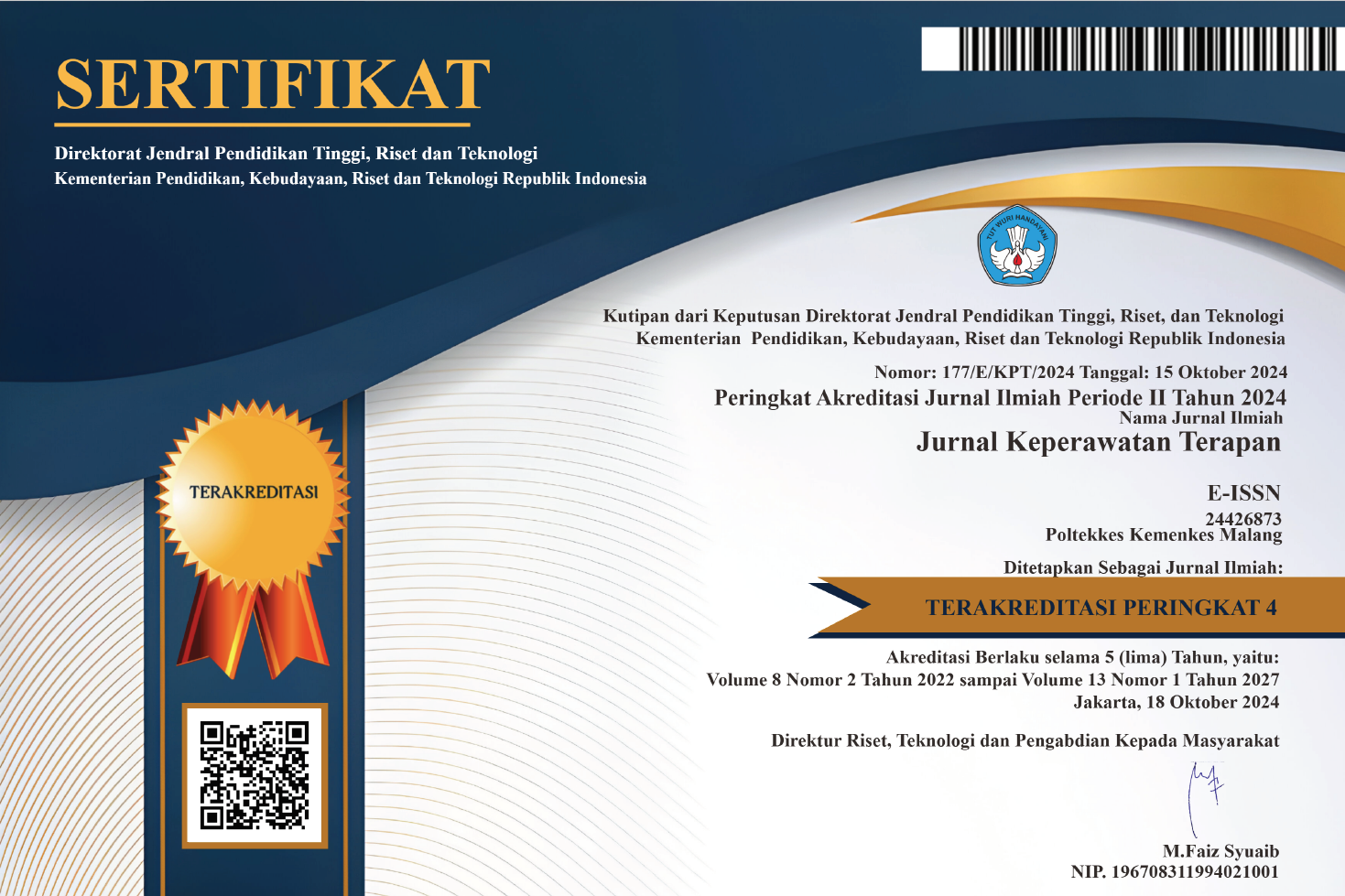Hubungan Indeks Massa Tubuh dengan Risiko Diabetes Mellitus Pada Remaja SMU di Kota Malang
DOI:
https://doi.org/10.31290/jkt.v7i1.5164Keywords:
body mass index, risk, diabetes mellitus, teenagersAbstract
Diabetes mellitus is a disease caused by a hormonal disorder that affects insulin 5.7% of the total population of Indonesia, including teenagers. Is a big challenge for the health sector to do the step in anticipation of the complexity of health problems caused by diabetes mellitus in Indonesia. This study aims to analyze the relationship of body mass index with risk of diabetes mellitus in adolescent high school in the city of Malang. This research is correlational research design, sampled in this study is partly a teenage high school class in Malang, city area drawn at random sampling with a large sample of 375 respondents. Research conducted at the high school SMU Negeri 6 and SMU Negeri 9 in the city of Malang, in May-August 2021. Data collection techniques using questionnaires and measurement of body mass index. Data analysis is descriptive and analytic Spearman Rho correlation with alpha 0.05 using computer. The results showed that there is a BMI (body mass index) related to findrisk of diabetes mellitus in adolescent high school in Malang with 0,000 p-values ??<? 0.05. Recommended for teens to pay attention to awake the ideal body weight, so avoid the risk of diabetes mellitus.
References
EURADIA. 2010, DIAMAP a Road Map for Diabetes Research in Europe, A Support Action funded by the European Commision under the 7th Framework Programme, 7 Sept. 2010
Gibney, Michael J, et. All.2009. Gizi Kesehatan Masyarakat (Public Health Nutrition) alih bahasa, Hartono Andry, EGC, Jakarta.
Ignatavicius D.D.& Workman, M.L. 2006. Medical surgical nursing 5 th Ed. St Louis, Missouri: Elsevier Saunders.
Instansi Gizi RSSA.2008.Buku Pedoman Praktis Diagnosa Gizi dalam Proses Asuhan Gizi Terstandar.
LeMone, P.& Burke,K. (2008). Medical surgical nursing critical thinking in client care 4th ed. Canada: Pearson Education, Inc
Lisdiana. 1997. Waspada Terhadap Kelebihan & Kekurangan Gizi. Jakarta: Trubus Agriwidya.
Persagi. 1999. Penuntun Diit. Jakarta : PT. Gramedia Pustaka Utama.
Rudijanto, A. 2010. Pencegahan dan Penatalaksanaan Diabetes Melitus melalui Pendekatan Komunitas dalam pidato pengukuhan Jabatan Guru Besar dalam Ilmu Penyakit Dalam – Endokrin pada FK Unibraw. Malang.
Smeltzer, SC, and Brenda G. Bare. 2008. Brunner &Suddarh’s textbook of medical – surgical nursing 8th ed, Philadelphia: Lippincott Williams & Wilkin
Soeparman, 1987, Ilmu Penyakit Dalam, Jilid I, Edisi II, Jakarta: Balai Penerbit FKUI
Soegondo, S.2006. Obesitas dalam Buku Ajar Ilmu Penyakit Dalam jilid 3. Edisi keempat. Hal 1941 – 1945. Balai Penerbit FKUI. Jakarta.
Soegondo, S, Soewondo, P, dan Subekti, I. 2009. Penatalaksanaan Diabetes Melitus Terpadu. Balai Penerbit FKUI. Jakarta.
Suhardjo. 1996. Berbagai Cara Pendidikan Gizi. Jakarta : Bumi Aksara.
Supariasa, IDN dkk. 2002. Penilaian Status Gizi, Penerbit EGC Jakarta












